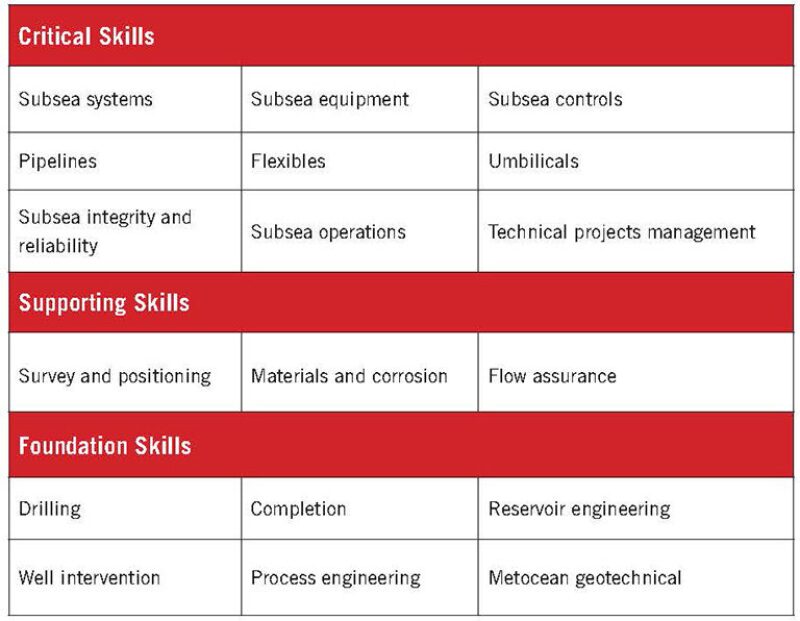I have been working over the past few years to build the facilities engineering capabilities in my organization. I have learned that for any of our subsea disciplines, there are three types of skills: critical, supporting, and foundation (Table 1).
So, you may ask: What is the point of knowing this?
When teams are assembled to develop and deploy new projects or operate and maintain existing assets, a knowledge of the required skills for an effective outcome helps in the staffing and selection of the appropriate engineers. A skills matrix may be used to develop and train individuals to take roles beyond the ones they perform. The matrix becomes a defacto road map for building organizational capability.

Individuals may also use the matrix to determine the types of skills they need to develop and the level of proficiency. In my company, we have used a skills matrix and proficiency levels (aware, proficient, and mastery) to map almost every subsea job. The “heat map” allows us to select well-balanced and effective teams and train individuals in the skills needed in the future.
Looking closely at the subsea example, you can see that the types of critical skills come as no surprise: They comprise the core elements of the subsea discipline. Interestingly, when we began this exercise, we polled our subsea subject matter experts and identified more than 40 critical skills.
Subsequent conversations resulted in a rationalization and calibration seen in Table 1: the core subsea skills required by everyone irrespective of the role in our business. The supporting skills are those that enhance the abilities of the subsea engineer. For example, a knowledge of flow assurance enables good architecture decisions to be made, and a good dialogue and systems understanding when working with the process and flow assurance engineers.
The foundation skills are in many ways the most interesting: They are essentially fluency requirements. True expertise in the foundation skills is not required, but a fundamental understanding of the core competencies and how each of the skill areas interface with subsea engineering certainly is. Our most accomplished subsea engineers have good foundation skills to complement a high proficiency in the critical skills.
We introduced this skill set approach a couple of years ago in an effort to build the capability of facilities engineers in our organization. Both management and engineers needed to know how to develop and sustain the right skills as our workforce changed (as a result of the “big crew change”) and as our projects became more complex (e.g., megaprojects and gigaprojects).
So far, the results have been good, especially in subsea, whereby our individual development paths are targeted to deliver the capabilities required for actual project, technology, and asset engineering positions. Our goal is the R3: right skills, right place, and right time. Using a skill-based approach has helped our engineers and our business. Taking a similar approach may help you and yours.

Paul S. Jones is the subsea unit manager at Chevron and a past SPE technical director of Projects, Facilities, and Construction. He is a member of the Editorial Board of Oil and Gas Facilities.


